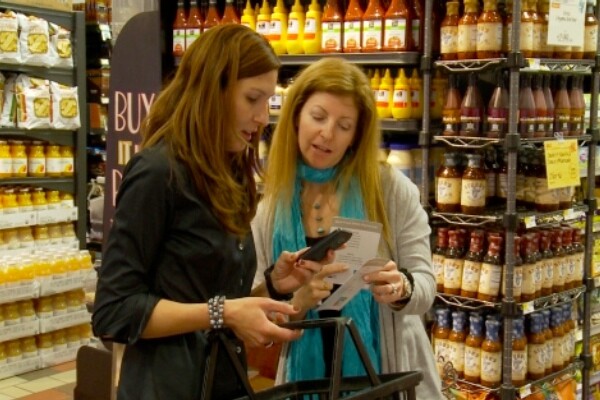5 Food Apps You Need to Download

30% of the country's food is thrown out. That's $165 billion in food trashed on a yearly basis. That's 1,249 calories per person per day. That's half the water being used on agriculture essentially growing garbage.
It's a problem. But one that a new phone app called PareUp is trying to solve.
It works like so: Food providers like grocery stores and restaurants update the app with the type of food they have left over, the price they want for it, and when it will be available to be picked up. Users find what they want, head over to the restaurant or grocery store, pick it up, and pay the (heavily discounted) price for it. Simple as that.
But this new app is just the latest that's changing how we make food decisions. Here are five other phone apps you owe it to yourself to download:
Fooducate
Browsing the grocery store shelves can be a confusing experience. Items that seem healthy are quite often the opposite. (I'm looking at you, cereal and cracker aisle.) This confusing landscape is what Fooducate tries to clarify. It assigns a letter grade to every product based on an algorithm that takes into account all of the positives and negatives that item offers. If they're not in a rush, users can also get a detailed list of why a product has a certain grade associated with it.
Locavore
Changing your shopping routine from going to supermarket chains to "shopping locally" can be difficult at first. Knowing exactly what's in season and where to shop is something that only comes with experience. Get Locavore attempts to cut down the learning curve by detailing a list of in-season items that are being sold at nearby farmers' markets, and then providing recipes for those items.
Seafood Watch
Choosing what seafood to get is no longer a question of what you're in the mood for. With nearly 85% of the world's fisheries being "fished to capacity or overfished," according to Monterey Bay Aquarium's Seafood Watch, it's important our choices take into account the sustainability of the fish. That's where Seafood Watch's phone app comes in. It offers advice on what to order -- and what to avoid -- depending on where you are making your purchase. And if your first choice is in the dreaded "Avoid" category, it recommends possible substitutes to try out instead.
True Food
While the battle over mandatory GMO food labeling continues to be waged, it doesn't mean we have to be in the dark about what foods contain GMOs. The GMO label is already here, sort of! It's just that it's available on your phone with the app True Food. It offers a guide that allows consumers to know if a certain product -- depending both on the type of product and the company that made it -- has a risk of containing GMOs. The app's also updated regularly to give consumers the most up-to-date information.
What's On My Food?
The folks at What's On My Food describe their own app as "a decoder ring for the pesticides on your food," and that seems just about perfect. This one's all about pesticides. Select a food and the app tells you what kinds of pesticides are most prevalent in that specific food, what the pesticides do, the risk of toxicity, the difference between organic and conventional offerings, and even what the pesticide's effect on the honeybee population is.
And a bonus sixth app:
Wild Edibles
Wild Edibles is worth a mention, but it also costs a whopping $7.99 for a download, a pretty penny in the world of apps. However, it does such a great job at identifying wild edible plants that can be harvested (along with a wide range of recipes for how to prepare them) that I'd feel wrong not mentioning. In fact, this app may pay for itself soon enough with all of the free plants you'll now feel safe plucking and cooking up at home.


